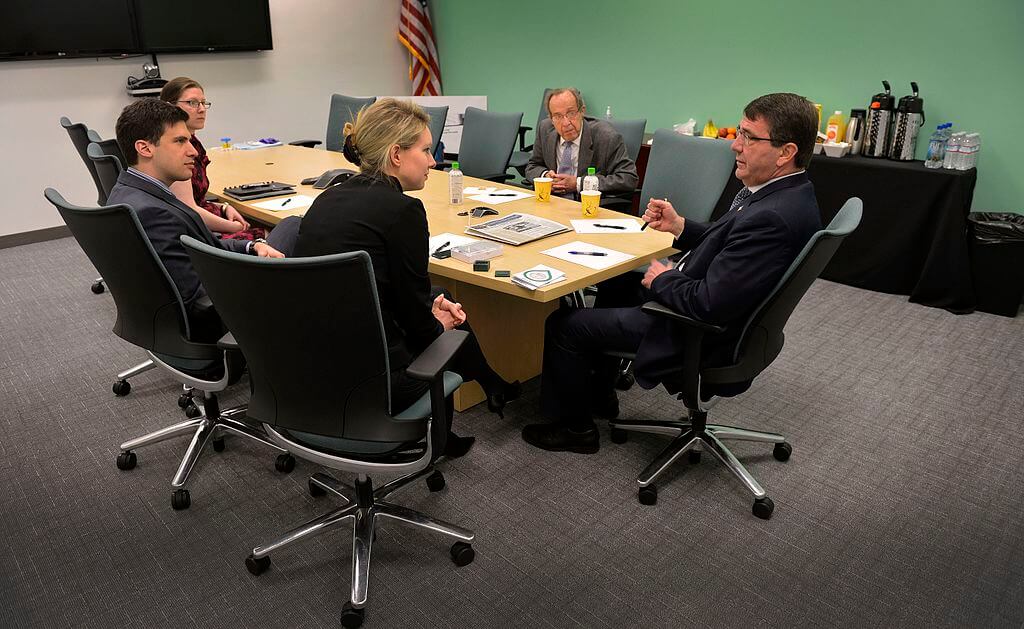In 2003, 19-year-old Elizabeth Holmes founded a company in the United States called Theranos. According to multiple sources, the company raised between $600 million and $700 million from venture capitalists and private investors, reaching a peak valuation of $9 billion in 2013 and 2014. What did the company supposedly sell? A machine that could instantly run blood tests with a very small amount of blood. The so-called innovation was set to rock the global healthcare sector, with pharmacies pre-ordering and signing up to have the machines in their stores as soon as they were available. Theranos’ board consisted of former US secretary of state George P. Shultz, former US secretary of defense William Perry, former US secretary of state Henry Kissinger, admiral Gary Roughead, general James Mattis, former Wells Fargo chairman and CEO Richard Kovacevich and several other high-ranking political and military figures.
Today, the company has long ceased its operations, after a Wall Street Journal investigation proved the product to be fraudulent and started a snowball of lawsuits that brought Theranos down.
While to some the failure may be attributed merely to product development issues, others believe that the problem was deep-rooted in corporate governance and the setup of the board of directors. But how could one go wrong with such prominent board members, right?
Business Forward speaks to Yageo associate professor of Accounting at University of Pennsylvania Wayne Guay about what one can learn about corporate governance from the Theranos case and how busy the board members of a company should be. Guay has published numerous researches on executive compensation and incentives, corporate governance, the role of financial transparency in governance and contracting and many other topics.
What can we learn from the Theranos case about corporate governance?
If you are thinking about the governance structures, the first thing you should think about is the ownership structure of the company and making sure that the various types of owners have thought about how they are going to be able to protect their own interests. How is control distributed across investors or management? In a situation like Theranos, the first red flag would be that you have an unproven founder that really hadn’t had much experience and has complete voting control over the company. You would want to think very carefully about giving control to a person like that and what kinds of checks and balances you have; in the same way that if you were a minority shareholder in a family-controlled business, you would want to make sure that you had protections for your interests in place.
Another red flag is that the company did not have a lot of experienced directors that were knowledgeable about the technology on the board. The board of directors is your first line of defense in governance. Most of the problems we see in terms of governance call upon shareholders take a more active role in governance, to try to discipline managers. Some parties should have a vested interest in making sure that they monitor what the CEO is up to.
It would not have been hard for someone that had any expertise in governance to look at that board and say this is pretty risky; namely because it included a lot of high profile people to try to get the company some advertising and because there were no people to actually look after the CEO.
What should a company do if its board members are very busy people?
Picking talented board members may mean that they are very busy. If you are going to get those busy directors on the board, one way to retain them is to not put them on certain committees. However, you have to make sure that you have other directors that will serve those roles. But if you, for example, have a very small board, it is going to be very hard to bring on a busy person and put the load on everybody else. If you have a big board, then you might have more flexibility to bring in busy people and spread that work among more people. You want to think about bringing busy directors on board in conjunction with how big your board is, the board’s independence and how many committees you have. Think about them as a group of different mechanisms as opposed to thinking about them one at a time.
Is there something called good or bad corporate governance?
There certainly are companies that are making mistakes or maybe not doing it right. But we cannot just look at simple metrics like whether the director is very busy or the CEO has been around for a long period of time. An analogy would be gun control. It is a big issue in many countries, and it has become a big issue recently with what happened in New Zealand. Certainly, guns have a useful role in society for defense and for other things, but you can also use guns to do bad things. And so, any of these corporate governance mechanisms can be used appropriately to resolve agency conflicts, or they could be part of the problem. There is no “one size fits all”. You need to think about the setting, where the company is, what it needs, what kind of company it is, what kind of problems it has, what kind of ownership it has, who the CEO is – and then think about what fits best. You want to know what is right for your company.









